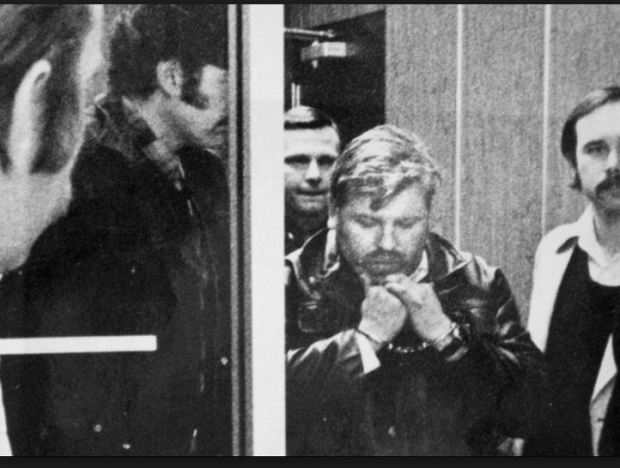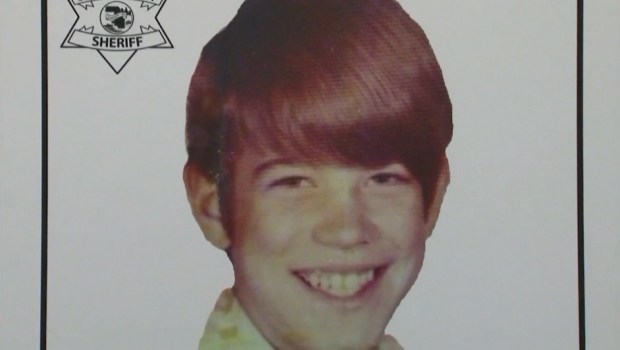
With Stephen King’s “It” taking cinemas by storm it is time to have a look at the real Clown Killer. John Wayne Gacy.
Although Pennywise is a total fictional character(well at least I hope so) there are similarities between him and John Wayne Gacy.

John Wayne Gacy was convicted of the torture, rape, and murder of 33 males between 1972 until his arrest in 1978. He was dubbed the “Killer Clown” because he entertained children at parties and hospitals as “Pogo the Clown.” On May 10, 1994, Gacy was executed by lethal injection.
Stephen King’s It was published in 1986, not long after the Gacy case and prosecution would have played out all over the media. King says his direct inspiration was the idea writing a story about a troll under a bridge, but he had also said he wanted to play on a childhood fear of clowns. That fear was probably driven into overdrive when moms told their kids in the ’80s to behave, or a killer clown like Gacy might get them, as a cautionary tale.

Notorious serial killer John Wayne Gacy was born on March 17, 1942, in Chicago, Illinois. The son of Danish and Polish parents, Gacy and his siblings grew up with a drunken father who would beat the children with a razor strap if they were perceived to have misbehaved; his father physically assaulted Gacy’s mother as well. Gacy’s sister Karen would later say that the siblings learned to toughen up against the beatings, and that Gacy would not cry.
The boy suffered further alienation at school, unable to play with other children due to a congenital heart condition that was looked upon by his father as another failing. Gacy later realized he was attracted to men, and experienced great turmoil over his sexuality
Gacy worked as a fast-food chain manager during the 1960s and became a self-made building contractor and Democratic precinct captain in the Chicago suburbs in the 1970s. Well-liked in his community and a clown performer at children’s parties, Gacy also organized cultural gatherings. He was married and divorced twice and had biological children and stepchildren.
Yet Gacy had a dark side: he was convicted in 1968 and given a 10-year prison term for the sexual assault of two teen boys. He was released on parole in the summer of 1970, but was arrested again the following year after another teen accused Gacy of sexual assault. The charges were dropped when the boy didn’t appear during the trial. By the middle of the decade, two more young males accused Gacy of rape, and he would be questioned by police about the disappearances of others.
It was later discovered that he had committed his first known killing in 1972, taking the life of Timothy McCoy after luring the teen to his home.
On December 11, 1978, 15-year-old Robert Piest went missing. It was reported to police that the boy was last seen by his mother at the store he worked at as he headed out to meet Gacy to discuss a potential job.

On December 21, a police search of Gacy’s house in Norwood Park Township, Illinois, uncovered evidence of his involvement in numerous horrific acts, including murder. It would later be determined that Gacy had killed 33 boys and young men, the majority of whom had been buried under the house and garage, while others would be recovered from the nearby Des Plaines River.
Gacy lured his victims with the promise of construction work, and then captured, sexually assaulted and eventually strangled most of them with rope. When he killed, he sometimes dressed as his alter ego “Pogo the Clown.”

Gacy’s trial began on February 6, 1980, with a prosecution team headed by William Kunkle. With Gacy having confessed to the crimes, the arguments were focused on whether he could be declared insane and thus remitted to a state mental facility. Gacy had told police that the murders had been committed by an alternate personality, while mental health professionals testified for both sides about Gacy’s mental state.

Ultimately found guilty of committing 33 murders after a short jury deliberation, Gacy became known as one of the most vicious serial killers in U.S. history. He was sentenced to serve 12 death sentences and 21 natural life sentences. He was imprisoned at the Menard Correctional Center for almost a decade and a half, appealing the sentence and offering contradictory statements on the murders in interviews. Though he had confessed, Gacy later denied being guilty of the charges and had a 900 number set up with a 12-minute recorded statement of his innocence. He took up visual art as well, and his paintings were shown to the public via an exhibition at a Chicago gallery.
As both anti–death penalty forces and those in favor of the execution made their opinions known, John Wayne Gacy died by lethal injection on May 10, 1994, at the Stateville Correctional Center in Crest Hill, Illinois.

There have been lingering concerns that Gacy may have been responsible for the deaths of others whose bodies have yet to be found, and the Cook County sheriff’s office has pushed to search a Chicago apartment building where Gacy once worked as a maintenance employee.
Cook County authorities are also using DNA evidence to try to identify six of Gacy’s victims, who remain unidentified. On August 1, 2017, one of those men, “Victim No. 24,” was identified as 16-year-old James “Jimmie” Byron Haakenson. Haakenson had left home in St. Paul, Minnesota, and traveled to Chicago to begin life in the city.

On August 5, 1976, he called his mother to let her know he had arrived, however, police believe Gacy killed him shortly thereafter. In 1979, Haakenson’s mother had contacted authorities to find out if her son was one of Gacy’s victims, however, she didn’t have dental records and the department lacked sufficient resources to identify him as a victim. Haakenson’s mother died in the early 2000s, but other family members provided DNA samples in 2017, and authorities made an immediate match to “Victim No. 24.”
Through his membership in a local Moose Club, Gacy became aware of a “Jolly Joker” clown club whose members—dressed as clowns—would regularly perform at fundraising events and parades in addition to voluntarily entertaining hospitalized children. By late 1975, Gacy had joined the Jolly Jokers and created his own performance characters: “Pogo the Clown” and “Patches the Clown”.

Gacy designed his own costumes and taught himself how to apply clown makeup, although some professional clowns noted the sharp corners Gacy painted at the edges of his mouth are contrary to the rounded borders that professional clowns normally employ, so as not to scare children.Gacy is known to have performed as Pogo or Patches at numerous local parties, Democratic party functions,
(Gacy with First Lady Rosalynn Carter in 1978, six years after the killings began. A pin indicating special Secret Service clearance is visible on his jacket)

charitable events, and at children’s hospitals. He is also known to have arrived, dressed in his clowning garb, at a favorite drinking venue named “The Good Luck Lounge” on several occasions with the explanation he had just performed as Pogo and was stopping for a social drink before heading home.

You must be logged in to post a comment.